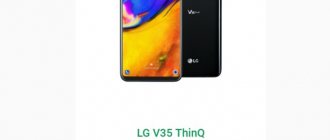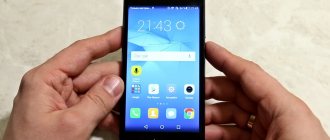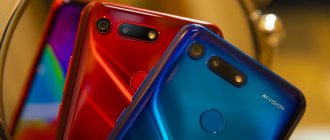Cameras
And now I’ll tell you about the camera of this wonderful Honor 20. There are so many eyes on the back panel, air sho, some kind of Yog-Sothoth.
In fact, there are actually 4 modules installed here and the main one is Sony IMX 586 with an aperture ratio of 1.8, there is also a 117-degree wide lens, and, most interestingly, there is a macro module, which, by the way, no manufacturer has supplied. Really, yes, this is some kind of super innovation.
Yes, in fact, it seems to be 2-megapixel, but when you shoot macro, you get a 1600x1020 photo, which means viewing it even on TV is no problem. Here we did a full review of the twenty specifically in terms of macro photography.
And the fourth module is for the bokeh effect module. And in this sense, of course, it’s interesting to see what this smartphone can do, because even with zoom, which isn’t here, it demonstrates a 10x zoom.
In general, the Honor 20 smartphone takes pictures so interestingly that we already clearly understand that there will be a lot of comparisons of cameras with it and we will look at a lot of nuances in subsequent reviews.
Now we will say that the quality of daytime photos is very interesting and artificial intelligence algorithms have been greatly improved, and where previously Honor and Huawei smartphones were not, let’s say, not the most advanced, now we see a very large increase in quality, all basic scenarios are being fulfilled Fine.
However, we can say that there are some problems with shooting backlight if the light source is in the center of the frame. We will also reveal this in separate reviews.
They turn out to be simply wonderful cats! This is finally a breakthrough, Huawei fell in love with cats, and this is just generally wonderful, we will also look at this in the future.
There are some questions about the quality of the wide lens and its coverage angle, which we will probably compare with the flagship smartphones of the same Samsung and try to understand which of them shoots better.
There are also questions more about the artistic part of processing night photographs. As you can see, in them the sky seems really evening, it’s like a time machine that takes us back a couple of hours. Although it looks beautiful, we will continue to look and compare.
But what really surprised me was the quality of the video, more precisely, its stabilization, because the Honor 20 does not have optical stabilization, and it would seem that the video, well, at least in 4K, should shake a little.
But in fact, everything is really smooth, everything is really beautiful, and even night photos, that even the sky is visible, despite the fact that there is no optical stabilization, the algorithms can really pull out that sky! Although, maybe it’s out of place.
But then write in the comments with whom to compare the Honor 20 as quickly as possible, we will have the opportunity to choose several smartphones for you, so we are waiting for your opinion! And this is the promised photo in super macro mode, and we are quite pleased with its quality. Again, we will look for someone to compare it with.
The front camera of Honor 20 has a resolution of 32 megapixels, aperture ratio is 2.0. The camera is good, it produces natural skin, the dynamic range works well in photographs, in principle, focusing works quickly and everything is very good.
What does this mean for Huawei?
Plans to conquer the world and reach first place in sales within a year and a half will have to be postponed. Moreover, the company is likely to experience a sharp drop in stock prices and device sales.
The problem lies precisely in these same Google services. These are maps, Gmail, YouTube, Google Play, Google Play Protect, Google. Users outside China do not need smartphones and tablets without these services.
Huawei honor 10 review: design, ergonomics
The new smartphone has such a bright and attractive appearance that it certainly deserves the nickname “handsome”.
At the top of its “high” screen there was a small neat “bang”, which, it seems, is already considered an essential ingredient of advanced design.
Thanks to the 19:9 aspect ratio and thin frames, the display occupies about 86% of the front surface of the smartphone. A distinctive feature of the new product is also the Ultrasonic fingerprint scanner, located on the front panel. The fact is that the fingerprinting device in Honor 10 is no longer optical, but ultrasonic, and is hidden under protective glass just below the screen.
The elegant back panel, which seems to have already become traditional, effectively changes color when viewed from different angles. The so-called gradient aluminosilicate glass consists of 15 layers that refract light and create an iridescent multi-colored glow.
In addition to the strict colors “midnight black” and “ice grey”, Honor 10 is also presented in two new, “shimmering” colors – blue and green, created at the Paris Design Center. The developers did not bother to certify the case according to IPxx, therefore, Honor 10 does not provide any moisture protection.
A small dark “bang” houses an oval speaker grille, a front camera lens, an LED indicator, as well as proximity and light sensors.
Under the protective glass below the screen, the outlines of the ultrasonic fingerprint scanner pad are visible. System navigation can also use a regular virtual panel and an on-screen navigation button.
The unchanged position on the right edge is occupied by thin, very different in size, volume rocker and power/lock button.
On the left edge there is a closed slot with a tray for two places, intended for subscriber identification modules of the nanoSIM format (4FF).
At the bottom end, along with a USB Type-C connector (with support for the USB 2.0 interface), there is a decorative grille for a “multimedia” speaker, a hole for a “talk” microphone and a 3.5 mm audio headset connector. Considering current trends, the presence of the latter will undoubtedly please many.
At the top end, a dark “eye” of the IR port is attached to the hole for an additional microphone.
The lenses of the rear photo module, together with the LED flash, are placed horizontally at the top of the rear panel, closer to the left edge. So that no one, apparently, doubts the beginnings of machine intelligence in the new smartphone, next to the photo module there is an inscription - “AI Camera”.
But from the inscription at the bottom of the rear panel, decorated with the Honor logo, you can find out the model number, company name and country of production.
The smartphone settings provide tools to make it easier to control it with one hand (“Mini Window” and “Move Keyboard”). Here it is appropriate to compare the weight and size characteristics of the 5.84-inch Honor 10 with the 5.11-inch Honor 9 (our review here) - (149.6x71.2x7.7 mm and 153 g) versus (147.3x70.9x7.5 mm and 155 g). Let us remember that the aspect ratio of the screen of the metal-glass predecessor is 16:9.
What does this mean for users?
To begin with, I would refrain from buying any Huawei and Honor smartphones because for Huawei and Honor users this event means pain and suffering. For example, updates will arrive very late.
Huawei P30 Pro
Subject to the release of smartphones on Kirin OS, smartphones with Android will be in limbo: will Huawei continue to support them or will they be killed? Will it be possible to update them over the air to Kirin OS or will users have to suffer? And will there be global versions of this OS? Or is Huawei ready to release it only for China?
In general, there are a lot of questions here, because we have not yet seen the system itself. It may well turn out that it doesn’t exist at all, and the news about the system was only to scare Google.
Huawei is ready to abandon Android and Windows, but for now it needs them
Ilya Kichaev
12 March 2019
So now most users are in a very unclear situation: some have an excellent Huawei P30 Pro in their hands, but it’s unclear what to do with it. While studying thematic threads on the 4PDA forum, I came across messages where people admit that they are already communicating with Huawei support about returning smartphones to the manufacturer.
Huawei honor 10 review: hardware, performance
The HiSilicon Kirin 970 system-on-chip, already familiar from Huawei Mate 10 Pro (our review here) and Huawei P20 (our review here), was chosen as the mobile platform for Honor 10. The processor, which includes two quartets of cores (four ARM Cortex-A73, 2.4 GHz, and four Cortex-A53, 1.8 GHz), works in tandem with a 12-core ARM Mali-G72 MP12 graphics accelerator.
At the same time, a key feature of the Kirin 970 is a dedicated neural processing unit (NPU). Let us recall that, for example, the implementation of semantic image segmentation technology makes it possible to identify many different objects in one frame. Thanks to this, instantaneous setting of optimal shooting parameters takes into account not only lighting conditions, but also the nature of the subject. The Honor 10 has 4 GB of RAM.
Testing Huawei Honor 10. Results in the AnTuTu benchmark
Testing Huawei Honor 10. Results in the GeekBench benchmark
Testing Huawei Honor 10. Results in the 3DMark benchmark
Above are the results of the main tests. Note that HiSilicon Kirin 970 turned out to be a worthy opponent, including Qualcomm Snapdragon 835 and Samsung Exynos 9 8895 Octa.
We received a smartphone with 128 GB (there is also an option with 64 GB) of internal memory, of which about 111 GB was available. Unlike its predecessor, Honor 9, it is no longer possible to expand this storage with microSD memory cards (there is no corresponding slot). Fortunately, support for USB-OTG technology allows you to connect regular flash drives to the device.
The presence of one radio channel determines the alternate operation of two subscriber identification modules in DSDS (Dual SIM Dual Standby) mode when they are installed simultaneously. At the same time, 4G networks, as well as VoLTE, are available on both SIM cards. The developers focus on the Easy Talk function, which reduces background noise when talking through a headset and increases the volume when talking in a whisper.
Fourth generation cellular networks support frequency bands of 1800 MHz, 2600 MHz and 800 MHz (b3, b7 and b20). The LTE Cat.13 (DL) communication standard allows 4G networks to reach speeds of up to 400 Mbit/s. The wireless communications suite also includes a 2-band Wi-Fi module 802.11 a/b/g/n/ac (2.4 and 5 GHz), Bluetooth 4.2 (BLE)
The presence of an NFC interface makes it possible to use the Android Pay payment service, as well as be aware of the balance of the Troika transport card at any time. In addition, the installed “Party” application suggests connecting several smartphones (on the same Wi-Fi network) via NFC to simultaneously play one track on them. As planned, the sound should be not only louder, but also really voluminous.
GPS, GLONASS and BDS satellite systems are used to determine the exact location and navigation. The A-GPS mode provides assistance in coordination over cellular and Wi-Fi networks.
Experts: Restricting Huawei's banking applications is possible, but will affect few
On August 13, Huawei, which is under US sanctions, expired its temporary license, which allowed it to cooperate with American companies. In particular, the restrictions concern cooperation between Huawei and Google, and therefore the ability to provide updates to users of Chinese smartphones for applications installed through the Google Play store.
Huawei technical service assures that users of Huawei and Honor smartphones will update applications installed through the Google Play store as before, despite the expiration of the license. “Users will continue to receive updates for both Google apps and other apps. There will be no problems with updating applications,” they told TASS, answering a corresponding question.
In addition to updating simple applications, due to US restrictions, Huawei may no longer receive SafetyNet security updates from Google. This, in turn, may negatively affect the operation of applications that require this certificate - banking and payment applications, some games and other programs with built-in microtransactions.
Obviously, if such security protocols are not updated, then no one will be able to guarantee the completion of transactions, which will be quite a big problem for companies and clients, says Denis Kuskov, head of TelecomDaily. At the same time, he believes that options for circumventing such sanctions exist for Huawei, but they must first be technically tested.
At the same time, the problem may not affect many users, says Eldar Murtazin, leading analyst at Mobile Research Group. Although all users who purchased a smartphone with pre-installed Google Mobile Services (GMS) may be at risk, the problems may only affect the Android Pay payment system, but only starting in 2021 - when SafetyNet expires, the expert believes.
US measures against Huawei
In August 2020, a ban on the purchase and use by American government agencies of telecommunications equipment from Chinese companies ZTE and Huawei came into force in the United States. Relevant measures apply to video surveillance systems and equipment of Chinese companies Hytera Communications Corporation, Hangzhou Hikvision Digital Technology and Dahua Technology, as well as their subsidiaries. A ban is also imposed on the purchase of services from the listed legal entities.
On May 15, 2020, Trump signed a decree introducing a state of emergency to protect the country's information and communications infrastructure from external threats. As a result, the US Department of Commerce blacklisted Huawei on May 17 last year due to a threat to national security, which seriously limited the company's ability to purchase high-tech equipment in the United States. The agency subsequently issued and then renewed a general license that renewed the right to maintain networks and provide software updates for the company's mobile devices. The US authorities have extended its validity several times.
Performance
As usual, the Huawei phone has a chipset made by the company itself. This is the Kirin 960. You can argue for a long time whether it is more productive in comparison with Snapdragoon or loses to its competitor, but the main thing is that the smartphone can easily cope with a huge number of everyday tasks, and it will also give gamers the opportunity to have fun, albeit not everywhere at maximum settings. If previously there were questions regarding the quality of the video accelerator on Huawei phones, now the graphics have become much better. A Mali-G71 is installed here, thanks to which the load on the core will be significantly reduced and the system will not have to reduce fps, while at the same time wildly overheating.
The device has 4 GB or 6 GB of RAM, depending on the configuration you choose. The drive is made according to the LPDDR4 standard, one of the best today. This means that you will not have problems launching or downloading programs.
Synthetic tests show very impressive numbers - more than 150 thousand “parrots” in Antutu. This is Snapdragoon 821 level.
What Huawei will lose without a license
Huawei will lose a lot if the US does not renew its license
The lack of a license and tougher sanctions are guaranteed to lead to the most unpleasant consequences for both Huawei itself and its users. From now on the company is prohibited from:
- Install Google services on any smartphone;
- Distribute monthly security updates;
- Use system tools like GMS and Google Cloud;
- Release Kirin processors on ARM architecture;
- Install any American applications.
Updates, Google Play and software: what will Huawei smartphones lose?
“The State Department supports the Commerce Department's decision to prevent Huawei from operating outside the laws of the United States. To achieve this, it was decided to limit Huawei’s ability to interact with American enterprises by limiting the rights of 38 enterprises affiliated with Huawei, on whose behalf the company entered into contracts in its own interests. We have provided local organizations with sufficient time to switch to alternative software and equipment, so we consider extending the license to be no longer appropriate,” the State Department said.
Comparison with competitors
A full review involves comparison with alternative models of gadgets in order to understand whether our smartphone differs from them for the better. This is exactly what we will do. On the Russian market, among phones with similar characteristics, we can highlight Mi 6 from Xiaomi and Honor 8 from the same company Huawei. The main difference is in the “filling”.
Xiaomi wins both in built-in and RAM. The default RAM here is 6 GB, while Honor 9 provides this option only in the prime configuration. On the flash drive we see 128 GB versus 32 GB and 64 GB in both configurations. The Nine, of course, supports a memory card, but only on a combined slot for a second SIM card. Xiaomi Mi 6 does not support SD cards at all, and this is especially not necessary with such and such an initial volume.
The only thing where the Mi 6 loses to the Honor 9 is in the camera modules. Huawei is generally one of the market leaders in this indicator, and its victory in this comparison does not surprise anyone. Nominally, there is also a dual main module, but the resolution is weaker (12 megapixels each), and the hardware is inferior to its competitor.
The differences between the “nine” and the “eight” are barely noticeable, and we have already talked about most of them. We only note that Huawei managed to improve its predecessor without radically increasing the price. And this is the main point. In Russia, Honor 8 can be purchased for about $340, and Honor 9 went on sale for $335 for the light version and $380 for the prime package. And here there is definitely something to pay extra for.
Britain called Huawei equipment not secure enough for its cellular networks
Until now, Micron Technology has tried to flaunt the fact that it has a license that allows it to supply memory for Huawei’s needs. The quarterly report showed that Micron's revenue decreased by 10% due to these sanctions, and the current license cannot be used to continue cooperation with Huawei. The company expects to compensate for losses only after six months.
Image source: Bloomberg
In the Micron Technology calendar, the fourth quarter of fiscal year 2020 ended on September 3. The company's revenue rose to $6.1 billion, up 11% sequentially and 24% year-over-year. Huawei accounted for almost 10% of quarterly revenue, so the loss of the Chinese giant from the list of clients will allow Micron to compensate for losses by attracting other memory buyers only in six months. At the end of the entire fiscal year, Micron's revenue decreased by 8% to $21.4 billion.
It should be understood that last year's license to export products for Huawei, which Micron had, has ceased to be valid since August of this year, so the company had to re-apply, but CEO Sanjay Mehrotra explained that no one can guarantee a positive outcome. In this situation, Micron prefers to start working with other smartphone manufacturers in order to redistribute the products that Huawei previously received.
Image source: Micron Technology
RAM chips accounted for 72% of Micron's total revenue in the last quarter. In this area, revenue grew by 22% sequentially and by 29% year-on-year. In physical terms, supplies increased sequentially by more than twenty percent. The average selling price of DRAM chips has decreased by several percent in a side-by-side comparison.
Solid-state memory accounted for 25% of Micron's total revenue in the past quarter. Production volumes of NAND chips remained approximately at the level of the previous quarter, the average selling price decreased by 8–9%. Revenue fell 8% sequentially but grew 27% year-over-year.
For the current fiscal quarter, Micron expects revenue in the range of $5 billion to $5.4 billion, slightly below third-party analysts' expectations. Demand for memory, according to company representatives, has begun to recover in the consumer and automotive segments, as well as in the smartphone segment. Demand from the segment of laptops and cloud solutions remains stable, and the gaming market has picked up. The enterprise segment will see weaker demand as companies look to cut costs amid macroeconomic uncertainty and some of Micron's customers have built up large inventories.
Capital expenditures for the next year will not exceed $9 billion, which is less than the previously planned amount. Micron will be forced to take such measures to prevent overproduction of solid-state memory chips. For the next calendar year, Micron predicts an increase in demand for RAM by 20% and for solid-state memory by 30% in volume terms. Such expectations, coupled with an assessment of the impact of sanctions against Huawei, caused the company's stock price to decline by 3.9% after trading.
Specifications and design
Huawei is famous for its very powerful cameras, and Honor 9 will definitely please fans of mobile photography. The main camera here is double, and there is a suspicion that soon the trend towards using two modules at once will be dominant for all Huawei smartphones.
In addition to the main feature in the form of a dual camera, which we will talk about in more detail below, we note the nice design of the gadget. The case is made of tempered glass, which has undergone repeated heat treatment, and is housed in a metal frame. This immediately provides an expensive appearance and durability to the phone. The back cover can be painted in black, white or dark blue or in a champagne shade. We advise you to choose a blue color - it looks original and definitely more lively than classic black and white.
The IPS matrix has Full HD resolution with a density of 428 ppi. The screen does not produce unpleasant glare, and the image does not deteriorate at angles. White balance is at the right level.
The gadget is not particularly different from its predecessor, but there are several innovations. For example, the fingerprint scanner moved to the front panel and was located under the screen. The rear glass is slightly rounded, just like the Mi 5 from Xiaomi. Let us remember that Honor 8 had a flat one.
If you think using glass with metal is not as practical as an all-metal case, then you should take the Pro version of the “eight”, but visually it is inferior to the “nine”. The difference in the location of the fingerprint scanner is insignificant and this, as they say, is purely a matter of taste. The main thing is that the smartphone looks expensive and attractive, and there is no shame in showing it off in any company.
How can Huawei get around the ban?
The same as Xiaomi, when the company had not yet released global versions of its firmware: through the installer in its own application store. That is, you buy a Huawei smartphone, turn it on and go to Huawei AppGallery, from where you download Google Services. But here a problem arises: by circumventing the current sanctions, the company is unlikely to get a chance for forgiveness.
It is worth recalling here that one of the reasons for such pressure was precisely the circumvention of US sanctions against Iran - companies operating in the States are prohibited from operating in Iran. But Huawei, according to the US Department of Justice, continued to do this with the help of its subsidiary Skycom Tech. According to Huawei, the company was divested from its assets.
Another option is to use Kirin OS. The company has been developing its own operating system for five years. Earlier this year, Huawei representatives admitted that they would only use it as a last resort. Apparently it has arrived.
On the other hand, Huawei's main market is China. At the end of the fourth quarter of 2020, the company occupied 28% of the Chinese market. But here Google services are not used because of the “Golden Shield” - a very developed Chinese firewall.
Source: Counterpoint Research
How to install Google services on Huawei Mate 30 Pro
Within a couple of days after the release of the smartphone, a fairly simple and convenient way to add Google services to the operating system appeared. This is done as follows:
Attention! You perform all actions described in these instructions at your own peril and risk.
1. In a standard browser on your smartphone, go to the site lzplay.net
2. Click the blue button to download the installation package.
3. Run the downloaded file and confirm the installation of all components.
4. Launch the Google application store and log in with your account. If you cannot log in, reboot your smartphone.
5. The installed Chinese application can be removed. First, do not forget to take away full rights from him along the path Settings - Security - Additional settings - Device administrators.
After successful authorization, you will receive functional services, just like on Android smartphones from other manufacturers. All familiar applications, navigation, YouTube, synchronization of mail and contacts will work. Even the Google Pay service with contactless payment is being launched.
Despite sanctions
Huawei has become the world's largest smartphone manufacturer, overtaking not only Apple, but also South Korean Samsung. According to the research company Counterpoint Research, Huawei's share was 2% larger than Samsung, the world leader at the end of 2020.
According to statistics, Huawei held a 19 percent market share versus Samsung’s 17%, but only in April 2020. Counterpoint Research experts have not yet published information for May 2020, as well as their forecast for the entire second quarter of 2020, which will end June 30, 2020
Information about the shares of Samsung and Huawei was personally confirmed by Neil Shah , vice president of research at Counterpoint Research. Huawei was able to achieve such significant results despite American sanctions aimed at destroying its business on the world stage.











